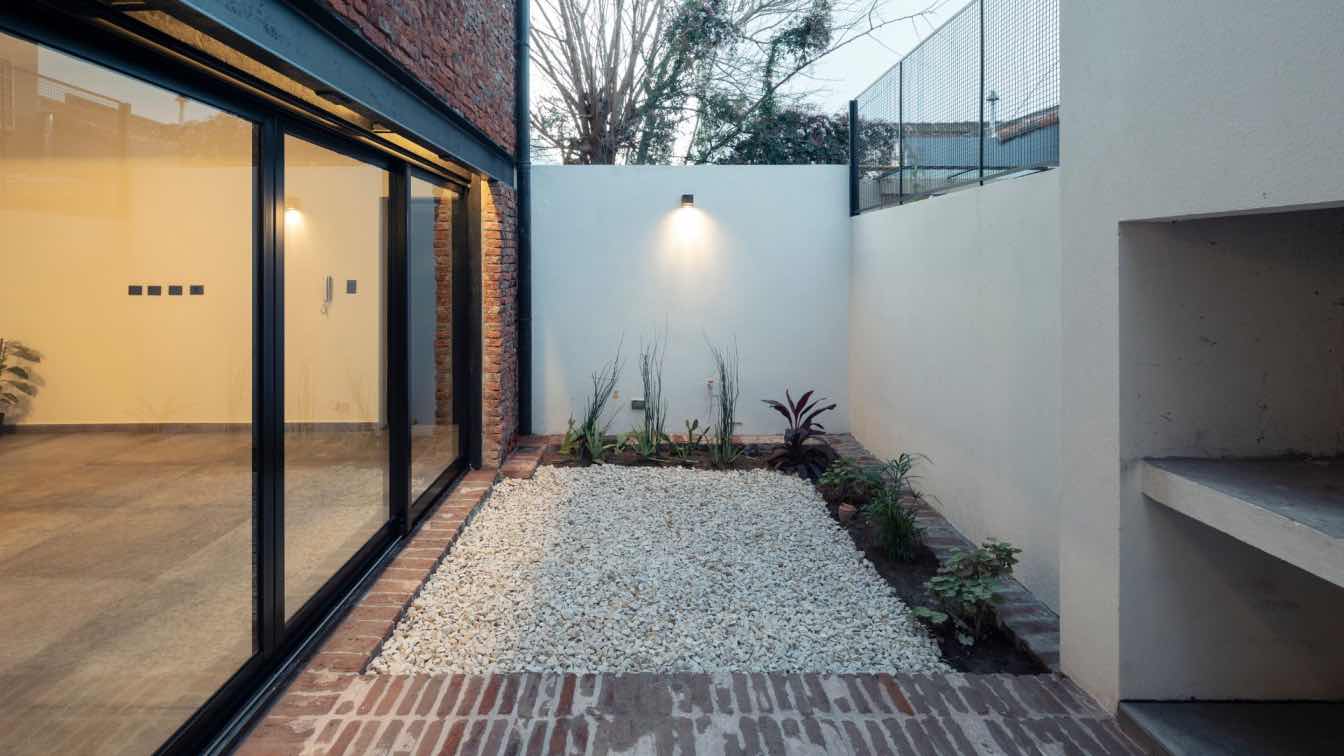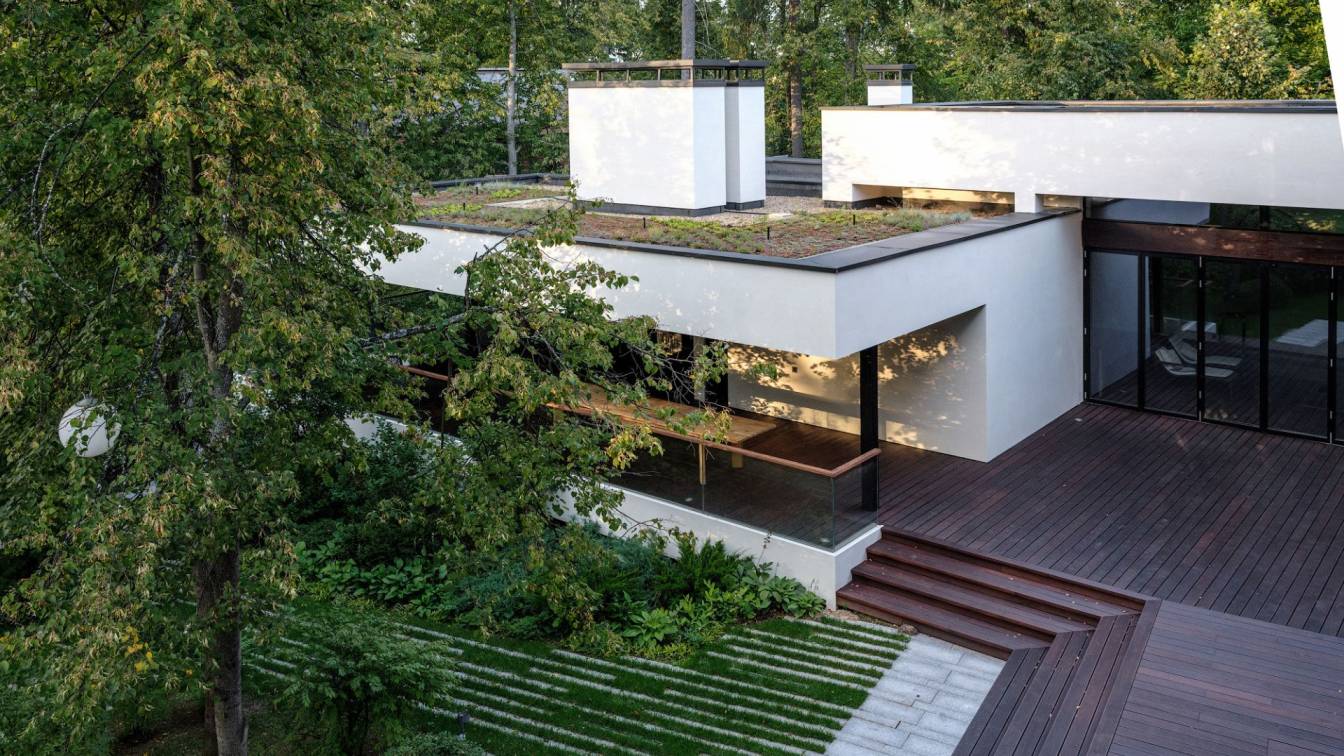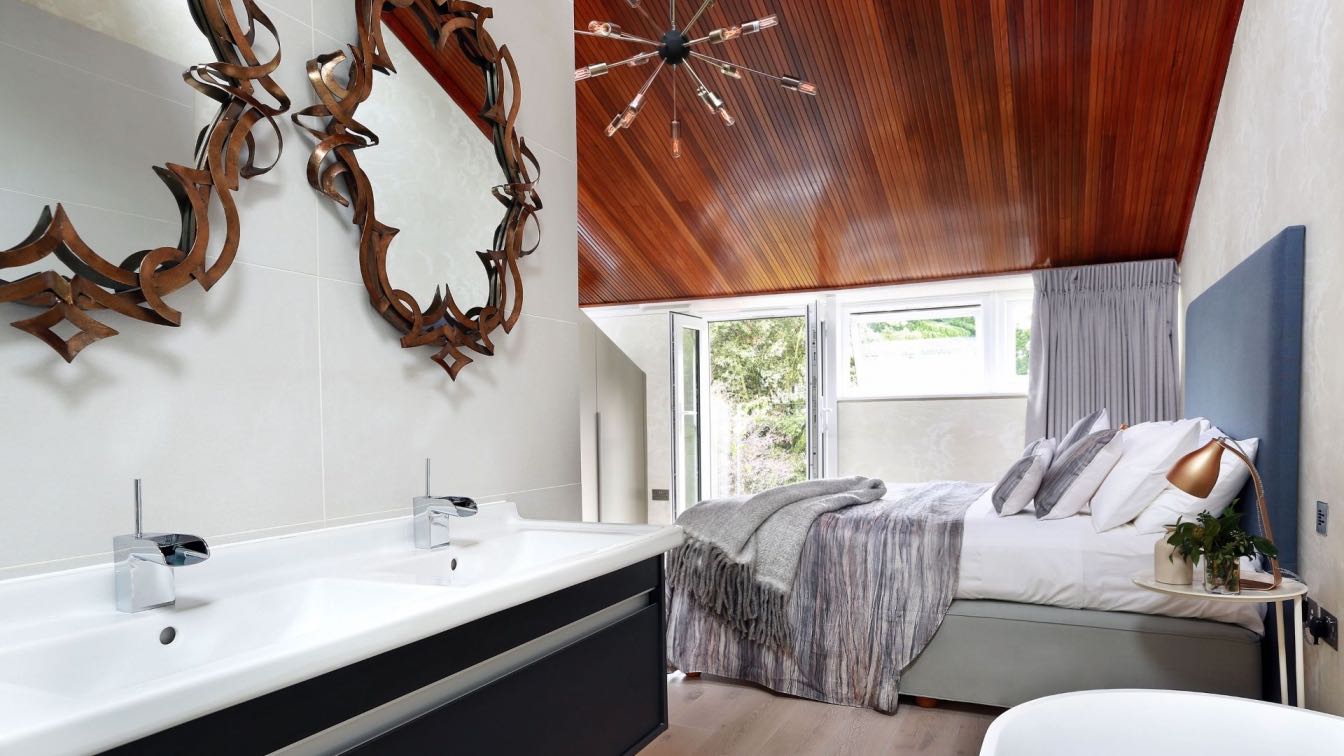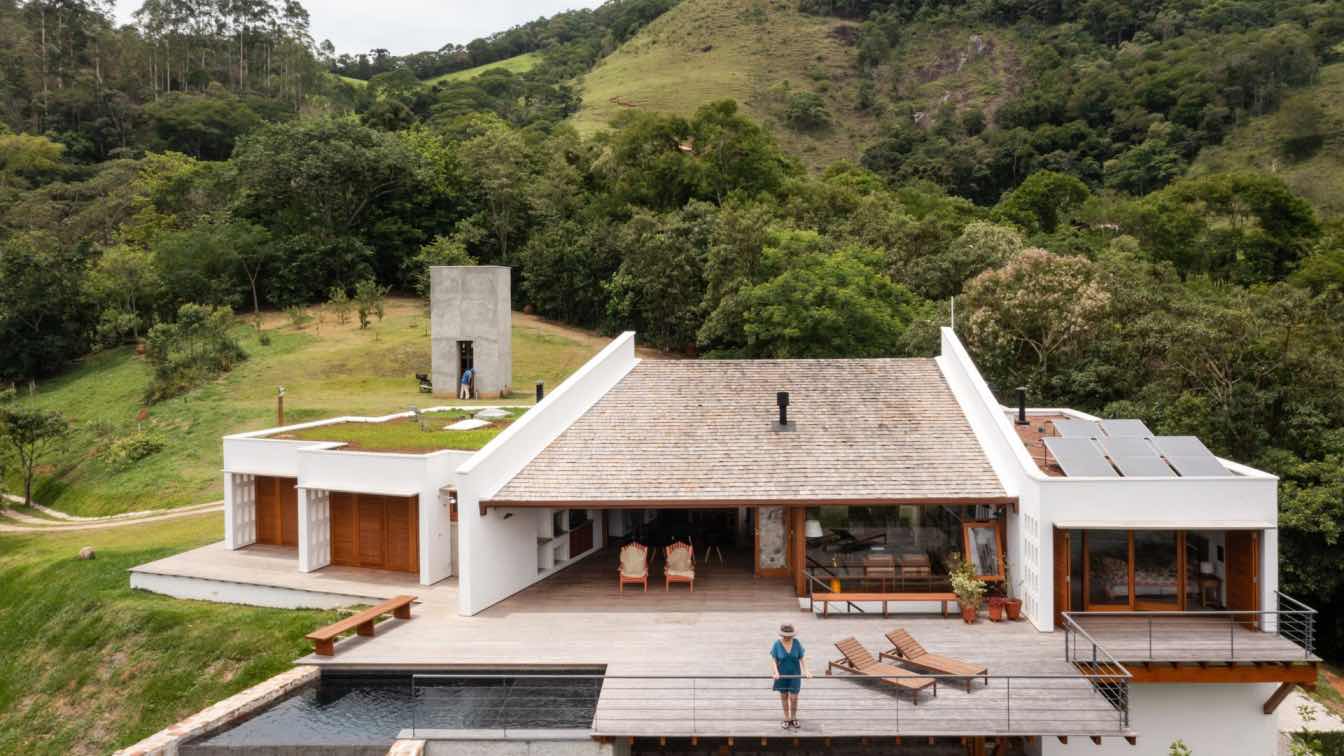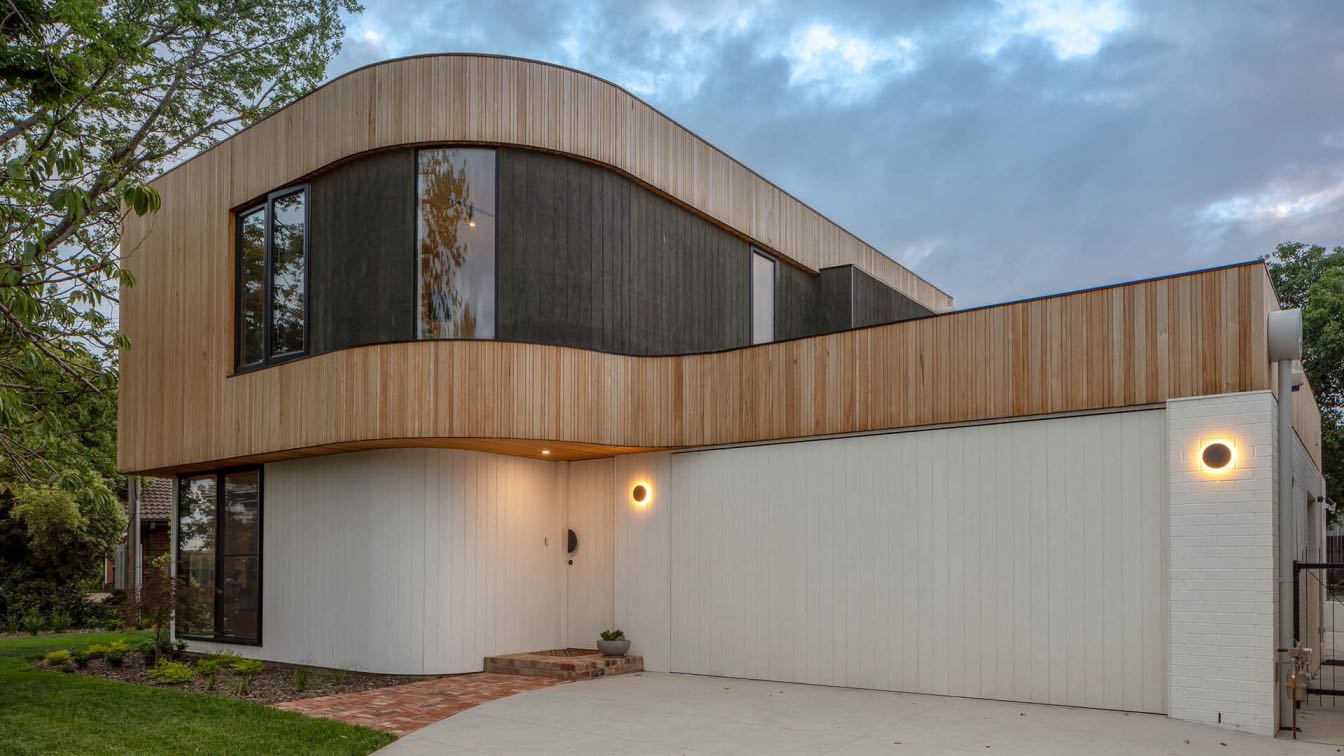OADD arquitectos: The challenge was to completely transform the old "ph", which functioned as a carpentry shop. Modify the original structure (dark rooms) with spaces full of light that open onto a large void, a longitudinal patio with a contemporary and welcoming imprint.
In this sense, the Helguera "ph" is an architectural signifier of change: a home that has evolved into a radical comprehensive proposal. The idea of a patio that articulates the social floor (living room, kitchen) with the grill, allows for a fluid development of both the daily and domestic activities of the home and broader social gatherings. This leads to separating the bedrooms on the ground floor, on a higher plane to improve lighting and privacy conditions. As a programmatic corollary, a large terrace is created that functions as a catalyst for outdoor activities.
The language of the ph refers to the old brick walls that composed it, generating a forceful aesthetic constructive solution and a material reality that is shown in its most genuine stereotomic quality. The simple condition of stacking masonry helped create a rough envelope of pregnant color, releasing the interior to a smooth white color. We call this design condition the “coconut paradigm” and it operates in a constant dialectic of sensory contrasts and temporal differences. In this way, we integrate preexistence as the germ of the new, reinterpretation and rereading as an indispensable design tool.













































































